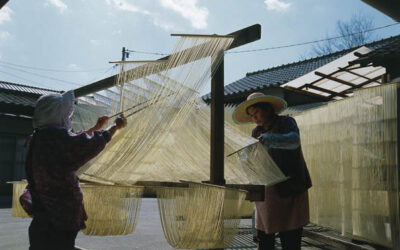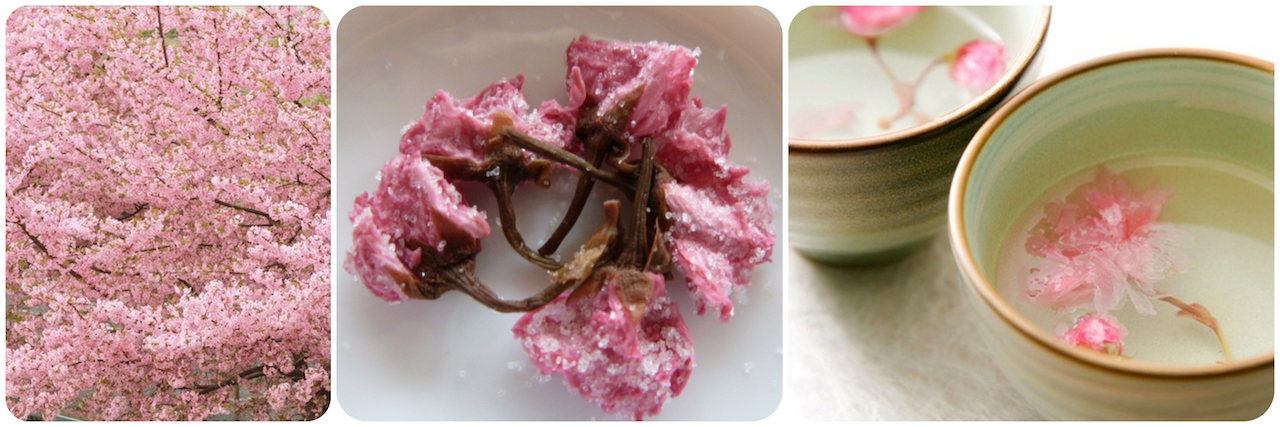
Salt-Cured Cherry Blossoms & Leaves
The blossoms and leaves of certain varieties of sakura are made edible by preserving them in salt, in a process known as shio-zuké. Deeply colored yaezakura blossoms are especially prized. When it comes to salt-curing leaves, however, pale-petaled Oshima-Zakura (Prunus Wilson var. speciosa Makino,
most often called Oshima cherry in America) are best.
Cherry leaves, and to a lesser extent the flowers, contain coumarin, a chemical compound that accounts for the distinctive sweet cherry aroma found in many plants (including cinnamon bark and chamomile). Consumed in large quantities, coumarin can be mildly toxic to humans, though many practitioners of kampōyaku, Japan’s herbal medicine, make use of coumarin’s anticoagulant properties.
The most common use of salt-cured cherry blossoms is to make a savory, tealike broth called sakura yu (桜湯) that is often served at wedding receptions. Both blossoms and leaves are also used in a wide variety of confections and savory dishes, too.
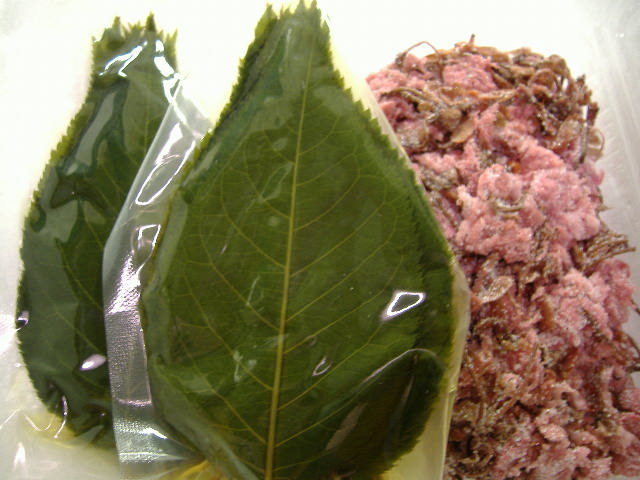
桜の塩漬
Sakura no Shio-zuké... A quirk in the reading of calligraphy makes 桜葉 (CHERRY TREE LEAVES) sakuraba… while 桜花 (CHERRY BLOSSOM FLOWERS) are ōka.
Commercially prepared salt-cured blossoms and leaves are sold in vacuum-sealed bags; the blossoms are sometimes sold in glass jars. Aroma dissipates quickly after opening so it is best to transfer unused blossoms or leaves to a container that can be sealed tightly. Refrigerate after opening.
Want to try making your own salt-cured ōka and sakuraba?
The biggest challenge will be to find fresh cherry blossoms and leaves that have not been exposed to chemical sprays or other toxic substances (such as exhaust fumes from cars and trucks from highways).
If you can source uncontaminated FLOWERS, DOWNLOAD INSTRUCTIONS here.
If you can source uncontaminated LEAVES, DOWNLOAD INSTRUCTIONS here.
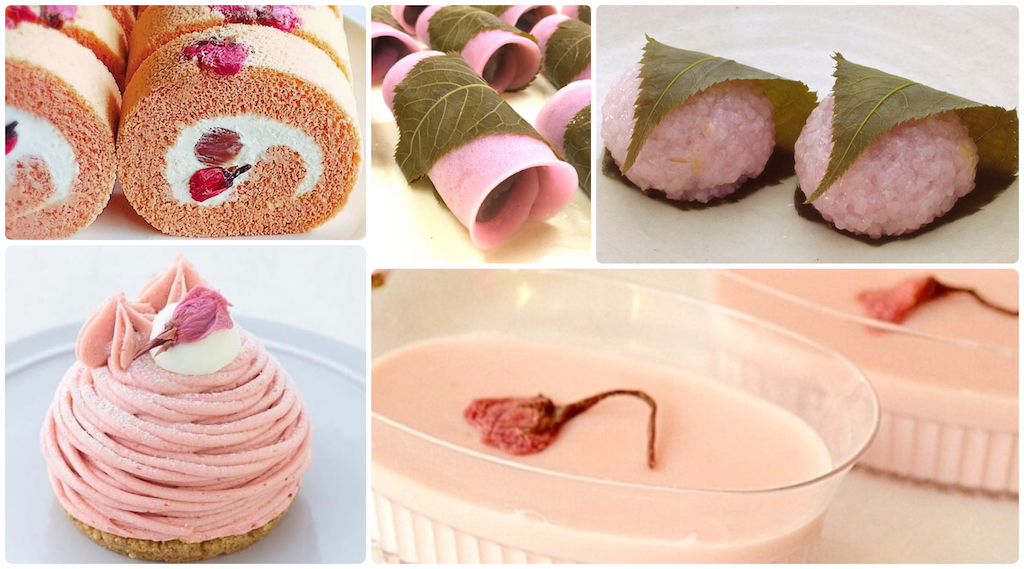
SWEETS made with Salt-Cured Sakura
Both traditional Japanese wagashi (sakura mochi, upper right) and contemporary western-style confections (logroll cakes, montblan and flan) can be made with salt-cured flowers and leaves.
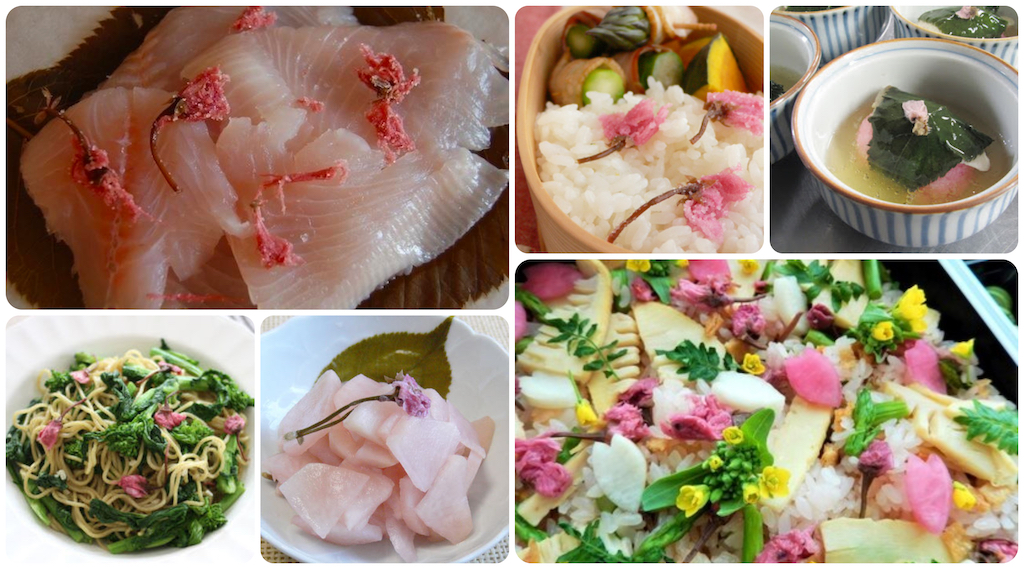
SAVORIES made with Salt-Cured Sakura
Enjoy a wide range of savory dishes prepared with salt-cured blossoms and leaves. Upper left corner: slices of seabass placed over salted cherry leaves and topped with salt-cured blossoms are enclosed in parchment before being steamed; top row center, an obentō featuring sakura gohan (rice seasoned with salt-cured blossoms); top row right, sticky rice-enclosed fish topped with salt-cured leaves is steamed and sauced; bottom row left, soba noodles tossed with broccoli rabe and salted flowers; bottom center, salted sakura-pickled turnips; bottom right, chirashi-zushi that includes bamboo shoots and salt-cured sakura.
Download recipe for Cherry-Steamed Fish
Download recipe for Turnip Quick-Pickle with Sakura Salt




